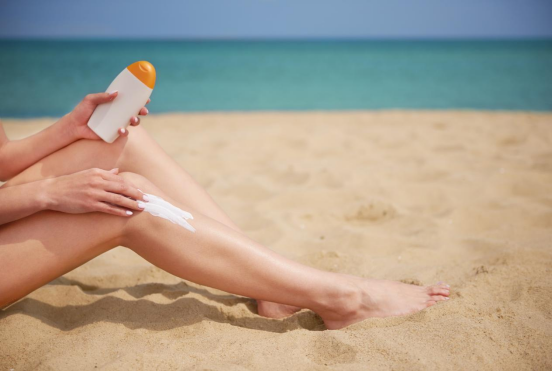
As customers come to be increasingly wise regarding skincare, the debate in between chemical and physical sunscreens continues to be a hot topic. While both deal essential security versus the sunlight's unsafe ultraviolet (UV) rays, physical sunscreens are frequently admired for their mild yet efficient formulation, making them a favored selection for those with delicate or responsive skin. The trick to their success depends on their active components, which create a physical obstacle on the skin to block out UV radiation. This post will look into the world of physical sunscreens, concentrating on their key active ingredients: zinc oxide and titanium dioxide.
Unlike their chemical equivalents, which absorb UV radiation and convert it right into warm, physical sunscreens work by sitting on top of the skin to develop a guard that disperses and spreads both UVA and UVB rays. This system is why they are often referred to as "sunblocks." The main advantage of this technique is its immediate efficiency upon application and the reduced probability of creating skin inflammation, as the active ingredients are not absorbed into the skin.
The most renowned component in the physical sun block family is Zinc Oxide. This powerhouse mineral is unique in its capability to give broad-spectrum security, implying it effectively protects the skin against the complete range of UVA and UVB rays. UVA rays are responsible for premature aging, including wrinkles and great lines, while UVB rays are the key cause of sunburn. By supplying comprehensive defense against both, zinc oxide plays a vital function in preventing sunlight damage and reducing the threat of skin cancer.
Moreover, zinc oxide is renowned for its soothing properties. It has been used for centuries to deal with small skin inflammations, breakouts, and burns, a testament to its mild nature. This makes sunscreens developed with zinc oxide an optimal choice for people with sensitive skin, acne-prone skin, or problems like rosacea and eczema. Its non-comedogenic properties likewise mean it is much less likely to obstruct pores, a typical concern for those with oily or mix skin.
The various other key player in the physical sun block classification is Titanium Dioxide. This naturally occurring mineral is an additional excellent active ingredient for creating a physical obstacle against UV rays. It is extremely effective at showing and spreading UVB radiation, providing durable defense versus sunburn. While it offers excellent defense across the UVB range, it is generally thought about much less effective against long-wave UVA rays compared to zinc oxide.
Consequently, titanium dioxide is typically made use of in conjunction with zinc oxide in sunscreen solutions. This combination creates a synergistic impact, improving the general broad-spectrum defense of the item. By leveraging the strengths of both active ingredients, formulators can produce a sun block that provides extensive and trusted defense versus the sunlight's destructive rays. Like zinc oxide, titanium dioxide is additionally mild on the skin and is an ideal alternative for those with sensitive or quickly inflamed skin.
In recent times, innovations in solution innovation have dealt with one of the first disadvantages of physical sunscreens: the thick, white actors they would commonly leave on the skin. Modern formulations currently utilize pulverized or nano-sized fragments of zinc oxide and titanium dioxide, which allows for an extra cosmetically sophisticated application without compromising their safety abilities. This means you can appreciate the gentle, reliable security of a physical sun block without the tell-tale white deposit.
To conclude, physical sun blocks provide a dependable and mild way to safeguard your skin from the sunlight. Their star active ingredients, zinc oxide and titanium dioxide, work in consistency to develop a physical guard that deflects physical sunscreen ingredients dangerous UVA and UVB rays. With their outstanding security account and viability for all skin types, especially sensitive skin, physical sunscreens are a powerful force in the fight against sun damage. The next time you are Browse the sunscreen aisle, think about the powerful, safety, and skin-loving advantages of a physical solution.